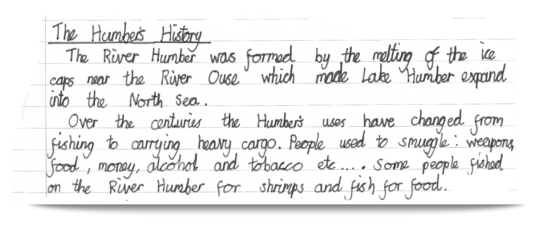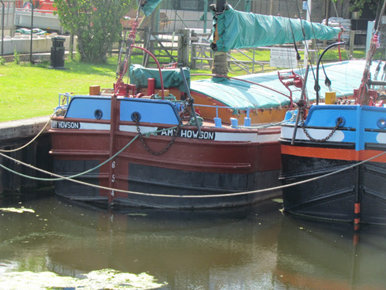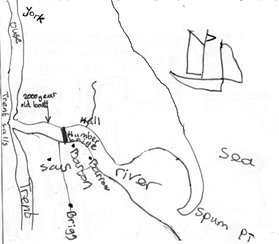What we learned about the River Humber
The following extracts are all in the children’s own words.
Boats on the Humber had flat bottoms because the river was very shallow in places, with sand and mudbanks. These boats, called Humber Keels, had a large square sail which could be taken down if they needed to go under bridges after they had left the Humber.

In Harrison’s time, it took many days to travel to London by horse and cart. Rivers were extremely important as they were used as a means of transport as well as for moving cargoes. Most people would have relied on walking to get from place to place. Barton was an easy walk but it would take four hours by horse or cart to get to Lincoln. It would be much easier to go by ferry to Hull.
Before the Humber Bridge, everyone used the ferries. To get the ferry you had to go to New Holland to get on and you would be on the ferry for about half an hour –or five hours if the weather was rough or you got stuck on a sandbank – this was quite common. The New Holland ferry to Hull started in 1820. Previously, there were ferries from Barton which were very busy. Some boats would have gone from the wharfs along the Humber bank between Barton and New Holland, especially Barrow Haven.

As well as sails, people could use the tides. You could use the incoming tide to push you up river as far as York and then use the outgoing tide to travel back. You could use this method to go up the Ouse or down the Trent a long way.
Boats on the Humber were either keels or sloops. A sloop was a larger vessel which would sail on the Humber Estuary or along the coast. The Amy Howson is a surviving example and is moored at South Ferriby.
The boats on the Humber would carry all sorts of cargoes. There was stone from quarries and bricks and tiles from the tileries on the Humber Bank. Also there was livestock and other farm produce. But boats were expensive and were often shared between groups of people.
Rivers were like our motorways. London to Hull by land would take 5 weeks in John Harrison’s time but by sea only 3 days.

Boats and rafts have been used on the Humber for thousands of years. There is a raft from the Bronze Age in the Heritage Centre at Brigg. The huge pieces of timber were actually sewn together with twine to make a big raft. It could have carried people and cattle across the river.
